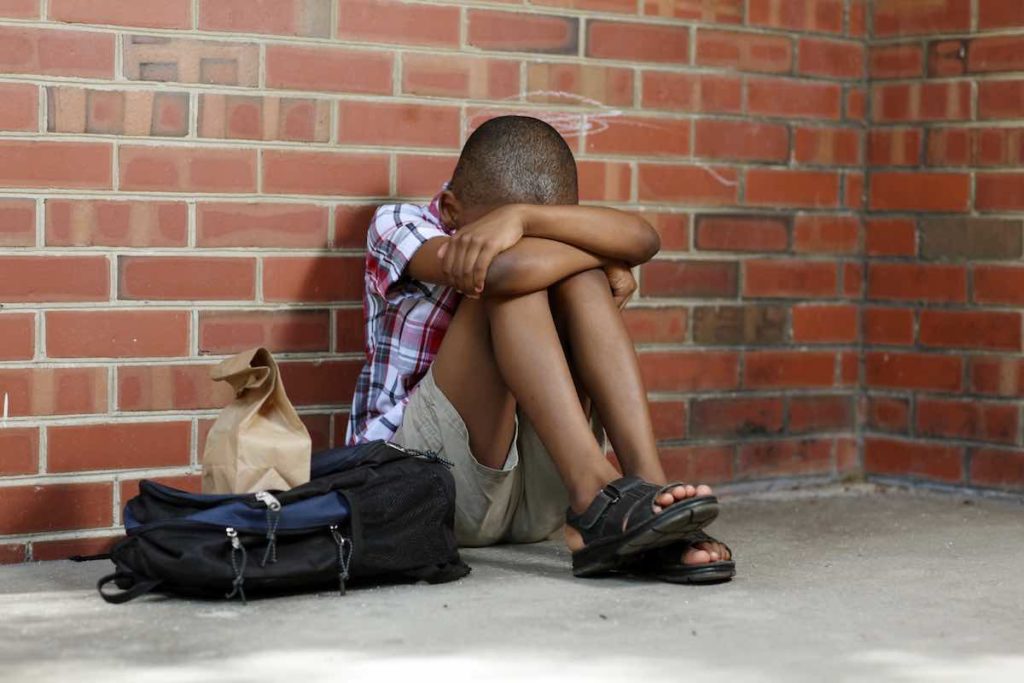UVA child and adolescent psychiatrist Roger Burket, MD, sees kids of all ages who refuse to go to school. In kindergarten and first grade, they don’t want to be separated from their parents. But as they get older, another problem keeps them home: bullying.
“If they were bullied the day before and there’s a risk that it might happen again, that might tip the scales towards not going,” he says. “It’s not so much that they don’t feel safe. They just don’t want to get picked on.”
Because of COVID, many students were mostly in virtual schooling and experienced less bullying. Now with the return to in-person school, they worry that the bullying will return.
According to the Youth Violence Project, part of the UVA School of Education and Human Development, bullying is common: In surveys of central Virginia third, fourth and fifth graders, 12-18% reported being bullied at least once a week.
What Is Bullying?
The Youth Violence Project notes that bullying can be physical (including sexual harassment), social or verbal.
But isn’t teasing just a part of growing up? We’ve all heard, “Sticks and stones may break my bones but words will never hurt me.” Eventually, though, the words do hurt, sometimes enough to leave long-lasting effects on self-esteem and mental health.
When a child becomes visibly upset by teasing and the perpetrator continues anyway, that’s when it crosses the line into bullying, Burket says.
“A lot of people feel bad when they’ve unintentionally upset someone, and that’s how people should feel,” he explains. “But some kids persist. It really has to do with this mean kind of teasing that goes on.”
Bullying occurs everywhere, including unsupervised locations such as hallways and bus stops. That may be why kids tend to identify more bullies in their school than the teachers. Text messaging and social networking sites such as Facebook make it possible for the problem to follow the victim home.
Cyberbullying seems to be increasing each year and is taken very seriously by youth. “A lot of these kids are bullied in more than one way, and often the school only has a small piece of what’s going on,” Burket says. “How can the school control what occurs after hours on social media. ”
The bystander effect can add to the problem: Other kids often witness, or even reinforce bullying but don’t do anything to stop it because they’re afraid of becoming targets as well. In addition, parents and school staff often don’t seem to be able to stop the bullying. “That’s actually worse for the child because it gives the illusion that everybody is against them,” Burket shares.
Ending Bullying
If a child is otherwise happy and bullying doesn’t last long — and often it doesn’t —it will likely only be a bump in the road. But bullying can exacerbate depression and suicidal thoughts if the child is already at risk.
Kids who bully have a desire to demonstrate that they have power over someone else, often because they too are victims of bullying or abuse. They seek out victims who are unlikely to fight back: kids who are naturally passive, easily intimidated and don’t have many friends.
Bullied kids also sometimes react by becoming bullies themselves.
Get More Parenting Tips
Sign up for our weekly emails for more stories about how to keep you and your family healthy.
If your child is being bullied:
- Listen. Ask the child for input on resolving the problem.
- Let him know it isn’t his fault, and it’s OK to talk about bullying. Kids often think talking about a bully is the same thing as tattling.
- Contact the child’s teacher, principal and guidance counselor to let them know about the problem. Many schools have established procedures for dealing with bullies. Some studies have shown that getting control of bullying improves academic performance at the school.
And here’s what your child can try:
- Talk to your teacher or your guidance counselor about the problem.
- Stay with a group of people. Bullies are more likely to target kids who are alone.
- Be assertive, but don’t fight back. Saying “Leave me alone” can end the problem.
- Make a joke out of what the bully’s saying. Sometimes, other kids standing around will laugh at the bully.
- Control your anger, look disinterested and unaffected, walk away.
This post was originally published in 2011 and updated in August 2021.
